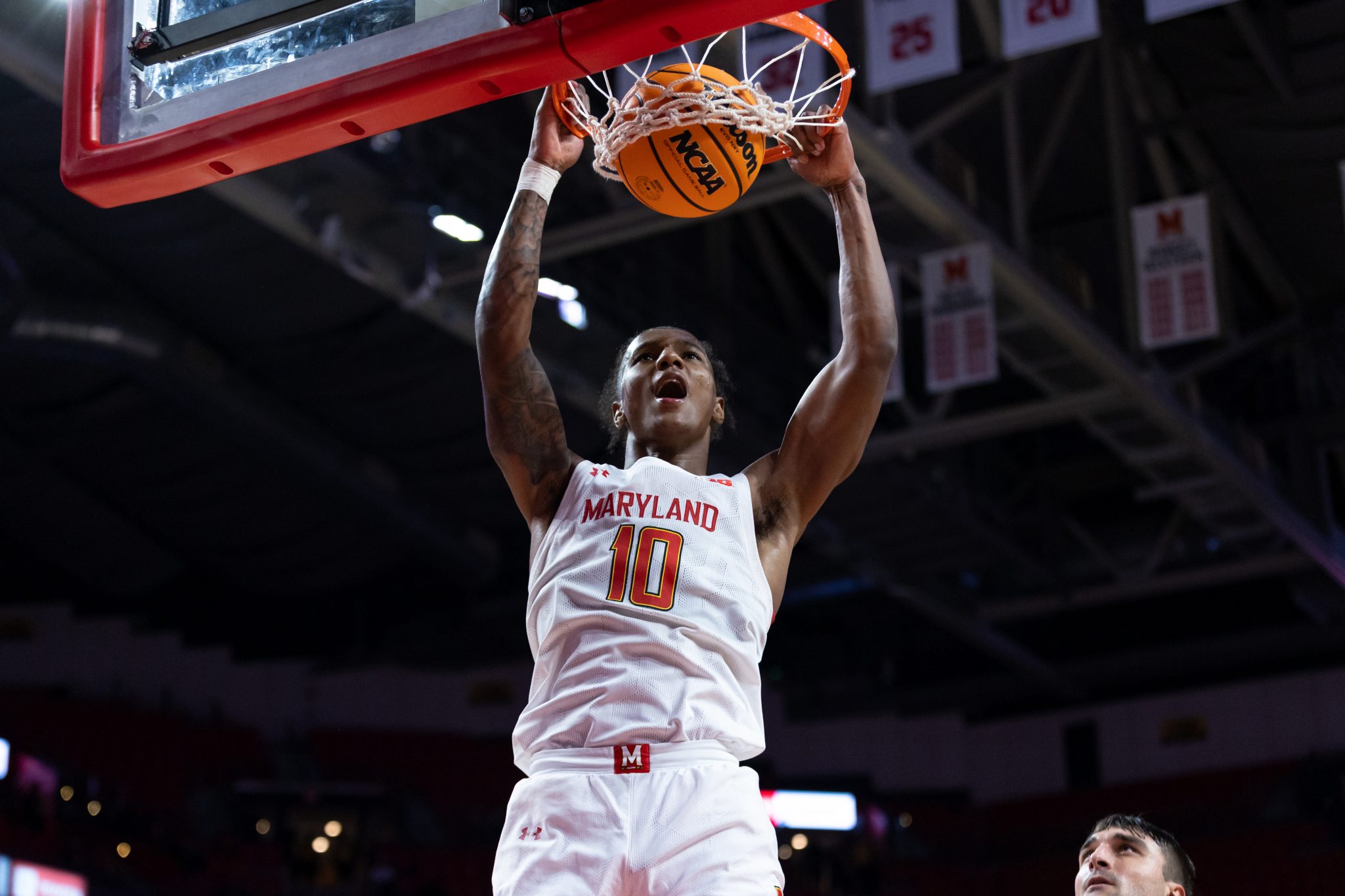In the opening minutes of the Kevin Willard era, Maryland men’s basketball looked uninspired on the boards and in the paint.
Niagara out-rebounded and out-muscled the Terps early on to force a competitive match in the first half. The Purple Eagles managed a 17-13 rebounding advantage and notched 20 points in the paint, trailing only seven points going into halftime.
“I feel like we didn’t do a good job [rebounding], especially in the first half and early in the second,” Jahmir Young said. “I feel like they were out-hustling us, [and] they were tougher than us.”
Niagara forward Sam Iorio caused problems for the Terps as he collected eight points and four rebounds in the early going. Most of that rebounding production came offensively within just a few series of each other four minutes into the first half.
“I feel like that was our biggest drop-off that we had and that’s why they stayed in the game,” Young said.
After that, Maryland rebalanced its physicality at the rim to sprint ahead in the first half with a series of long-range splashes, including a pair of threes by Donta Scott and efficient play by Hakim Hart as he collected seven points on three shots.
[Maryland men’s basketball downs Niagara in season-opener, 71-49]
The Terps scarcely relied on points in the paint with only 10 of Maryland’s 34 first half points originating from close-range. Julian Reese, Maryland’s tallest starter, came up short in the first half of lofty expectations considering the competition on the boards and above the rim. He had no shot opportunities and came up with three rebounds.
Reese would bounce back with seven points and four rebounds in the second half to finish with seven points, seven rebounds and two assists. It wasn’t a poor performance, but the Terps may need more from Reese in the future to elevate a smaller lineup.
“I’m happy with Julian … he did some physical things,” Willard said. “We got to get him the ball a little bit, [and] that’s going to come but I thought Julian took a good step.
Willard pointed out Reese is only a sophomore, and the coach lamented last year’s adverse nature as Maryland players faced Turgeon’s departure and playing during COVID-19.
“You’re looking at pretty much a freshman right now and for a freshman to play 26 minutes [with] seven [points], seven [rebounds] and be plus-16, two assists, one turnover, that’s a pretty darn good number for the five-man,” Willard said.
[Donta Scott met coach Kevin Willard’s first challenge by improving diet, reshaping body]
Donta Scott shot 80 percent from behind the arc
Scott swished four of five shots from three and led the Terps in points with 18 points in their season opener. While the forward shot about 29 percent from the arc last season, Scott’s shooting touch reinforced Kevin Willard’s small-ball rhetoric.
“[The fast-pace] helped me a lot because even if I’m not pushing the ball … I can sprint to the corners and get my shots,” Scott said. “[I] find it a little bit easier instead of pushing the ball and trying to create for myself.”
If Scott can remain flexible from distance, Maryland won’t need to put as much pressure on Reese or Scott himself to perform from the interior with Hart, Young and Carey projected to be shooting threats already.
The first half against the Purple Eagles could be indicative of what struggles the Terps could face against more physical teams, but also how they could combat those struggles with efficiency from the field. The Niagara game result serves as a limited litmus test for a Maryland squad expected to show off a unique, fast-paced playing style.
Reese and his team’s results in a small sample size could seem a bit troubling considering what’s ahead for the Terps. Teams such as Purdue and Louisville host larger lineups that will likely give Maryland more trouble in the paint — forcing the Terps to compensate from range like Scott and others did against Niagara.



